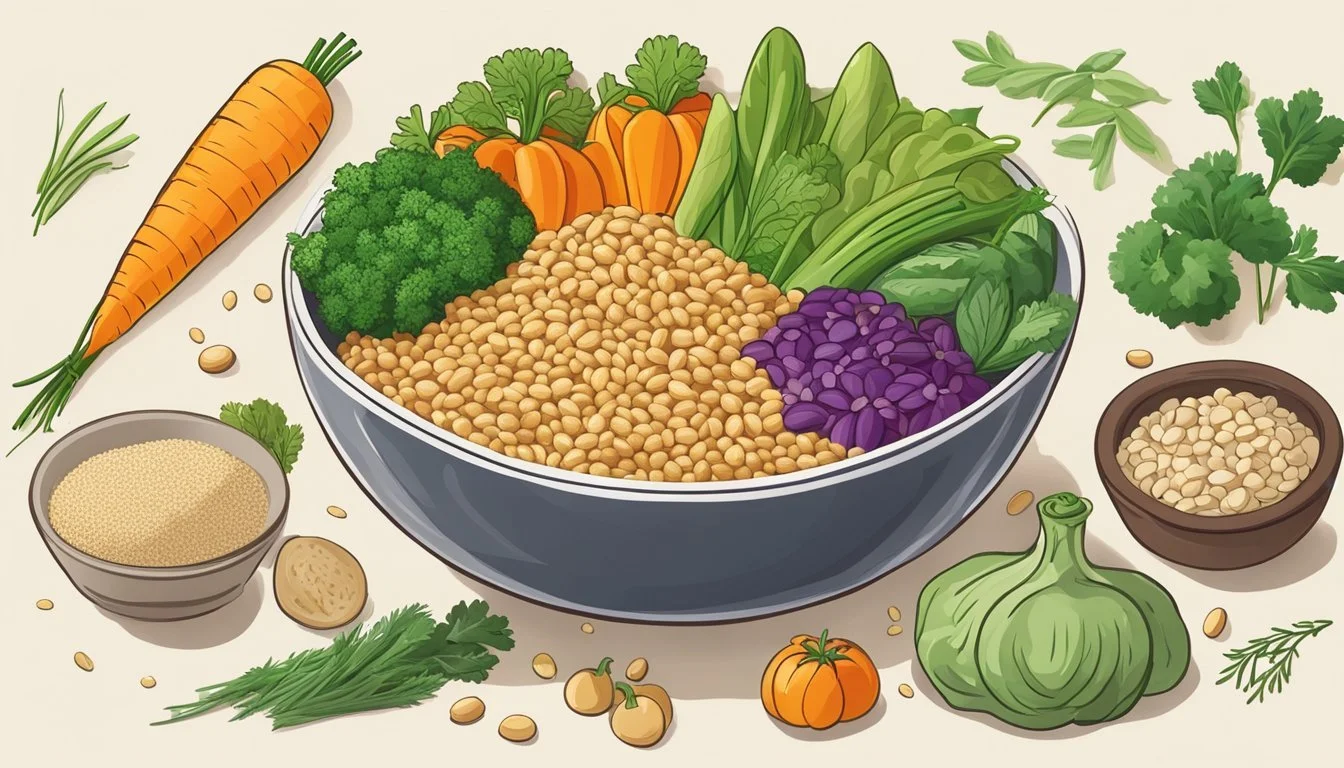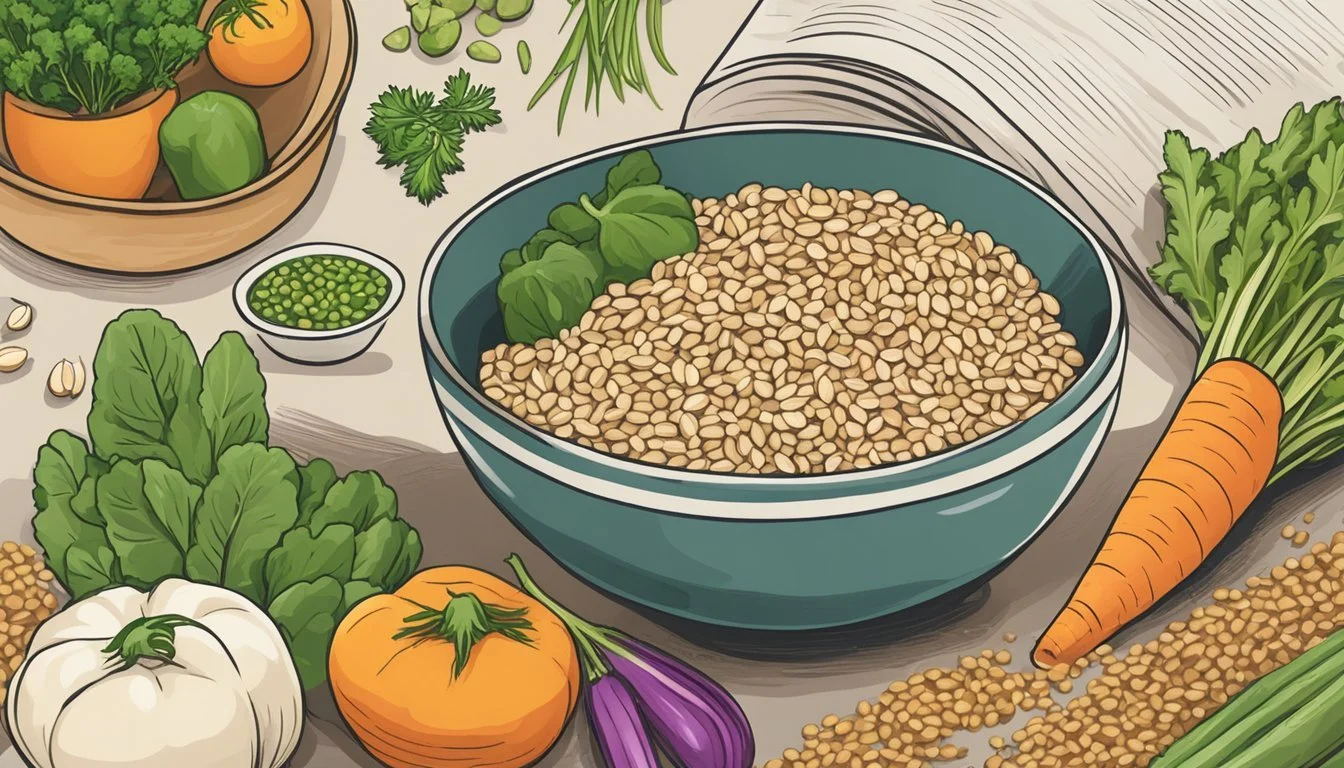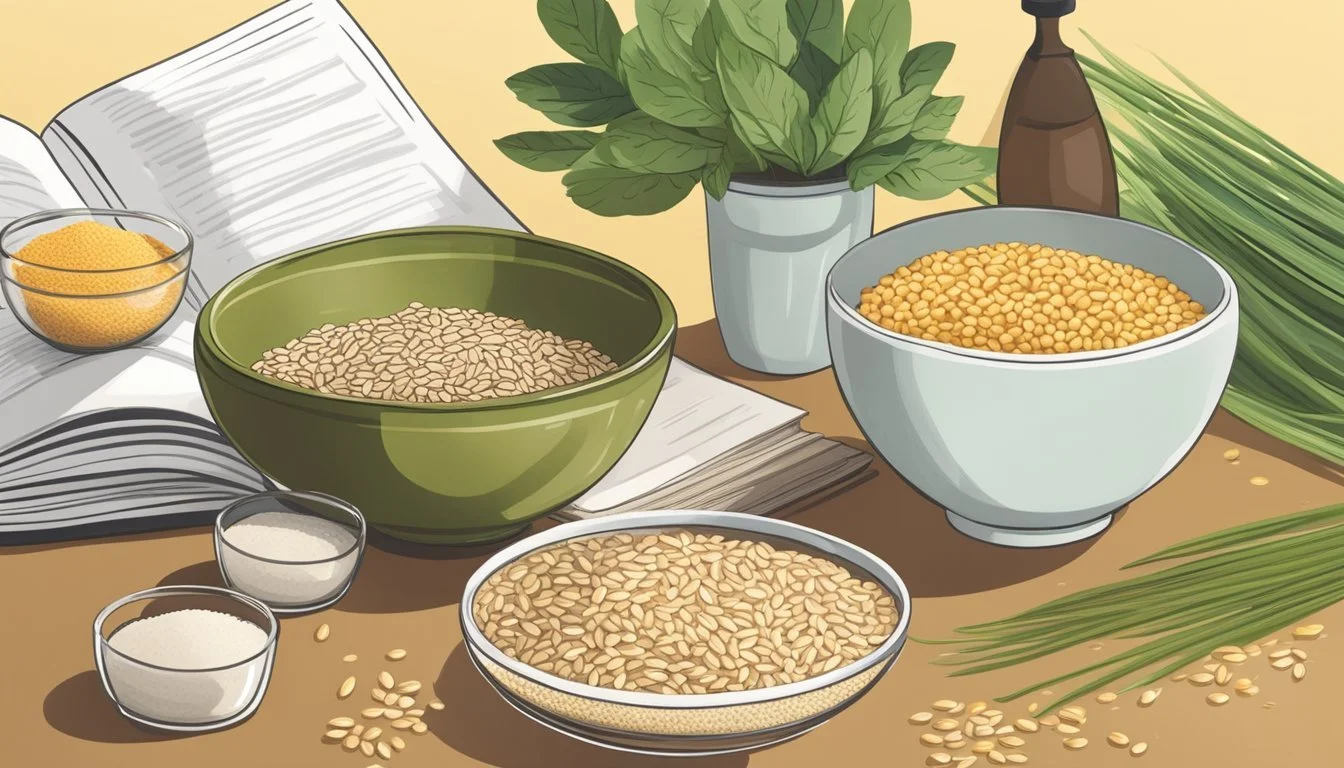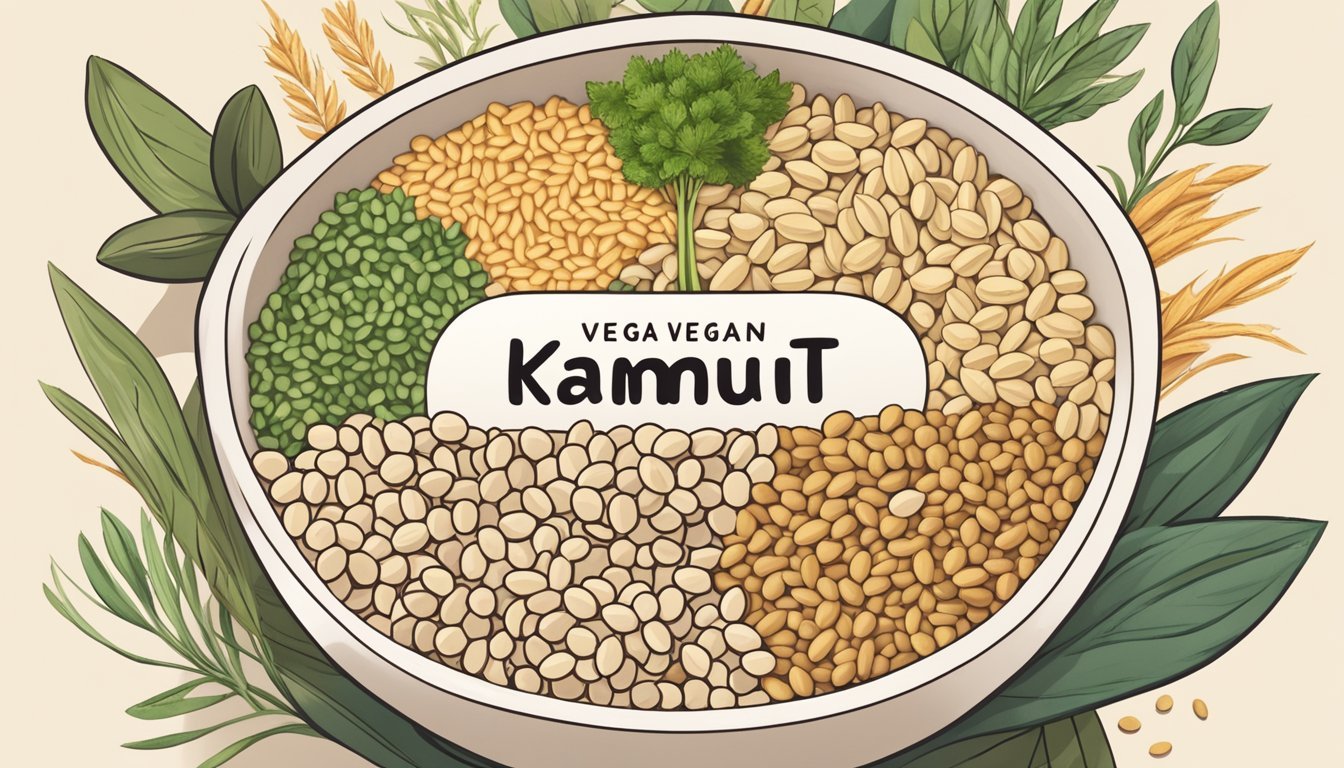Is Kamut Vegan?
Unveiling the Truth About This Ancient Grain
Kamut, also known by its trademarked name and its ancient grain variety, Khorasan wheat, is indeed a plant-based ingredient that is suitable for a vegan diet. This grain, which originated from an ancient cereal grain discovered in what was once known as Kemet in ancient Egypt, has no animal-derived components, making it a clear choice for those adhering to a vegan lifestyle. The grain's embodiment of being plant-sourced aligns well with vegan principles, which exclude all forms of animal exploitation and cruelty from one's diet and lifestyle.
In consideration of its nutritional profile, kamut presents itself as a valuable source of protein for vegans, supplementing diets that exclude meat and dairy. Although not a complete protein, kamut provides a substantial amount of protein, which can be leveraged in a well-planned vegan diet to maintain adequate protein intake. Furthermore, it delivers a range of other essential nutrients and health benefits that can support overall well-being. The versatility of kamut allows it to be transformed into various forms, including pasta and flour, which can be used in an assortment of vegan recipes ranging from hearty meals to nutritious snacks.
Vegan cuisine often emphasizes the importance of diversity and nutrient density, two qualities kamut brings to the table without complications. Its rich, nutty flavor provides an added dimension to dishes, and given its robust texture, it lends itself beautifully to recipes that require grains with a bit more substance. Hence, it's not only the vegan suitability of kamut that merits attention but also its ability to enhance culinary experiences for those seeking plant-based options.
What Is Kamut?
Kamut is an ancient grain, known for its rich nutritional profile and organic cultivation. Often recognized as khorasan wheat, it is embraced as a healthier alternative to modern wheat varieties.
Origin and History
Kamut, or khorasan wheat, is believed to have originated in Egypt or the Fertile Crescent, an area renowned for the beginnings of agricultural society. This ancient grain has been preserved over millennia due to its robust nature. The term "Kamut" is actually a trademark used to protect the grain's traditional and organic growing methods. Unlike modern grains, Kamut must adhere to specific quality standards, which include being 100% organic and grown with sustainable agricultural practices.
Kamut vs. Modern Wheat
Kamut distinguishes itself from modern wheat through several key characteristics. Firstly, it retains its ancient genetic code, meaning it has not been subjected to the extensive breeding processes that have altered modern wheat. Here are some of the differences highlighted:
Grain Size: Kamut grains are noticeably larger than those of modern wheat.
Nutrient Profile: Richer in protein and minerals, Kamut provides a dense nutrition profile compared to common wheat.
Flavor: It boasts a nuttier and buttery flavor, often preferred by gourmet chefs.
Digestibility: Some people find Kamut easier to digest than wheat, although it still contains gluten.
As a whole grain, Kamut maintains its nutrient integrity by keeping all parts of the kernel, including the bran, germ, and endosperm, intact during processing.
Nutritional Profile
Kamut is celebrated for its high nutritional value, offering substantial protein content, a wealth of fiber and minerals, and an impressive array of vitamins.
Protein Content
A cup of Kamut provides roughly 9.8 grams of protein, making it a strong plant-based protein source. This protein is crucial for muscle repair and overall bodily function.
Fiber and Minerals
Fiber: One cup contains about 7.4 grams of dietary fiber, promoting digestive health.
Minerals: Kamut is an excellent source of several key minerals:
Magnesium: It contributes significantly to the Recommended Dietary Allowance (RDA) for magnesium.
Zinc: This grain delivers about 37% of the US RDA of zinc per 100g serving.
Iron: An important component for blood health, iron is present in noteworthy amounts.
Selenium: Crucial for thyroid function, selenium is among the minerals found in Kamut.
Vitamins
Kamut is richer in certain B vitamins like thiamin (B1), riboflavin (B2), niacin (B3), and pantothenic acid (B5) when compared to other whole grains. These contribute to a range of physiological processes, including energy metabolism and the maintenance of normal skin and hair.
Health Considerations
When evaluating the role of kamut in a vegan diet, it's important to consider its gluten content and nutritional value. While kamut is a nutrient-rich whole grain, those with celiac disease or gluten sensitivity need to be cautious.
Celiac Disease and Gluten Sensitivity
Celiac Disease is an autoimmune disorder where the ingestion of gluten leads to damage in the small intestine. Kamut contains gluten, making it unsuitable for individuals with celiac disease. Gluten Sensitivity, also referred to as non-celiac gluten sensitivity, presents less severe symptoms than celiac disease, yet consuming gluten can still trigger adverse reactions. As kamut is a variety of wheat, it poses similar risks and should be avoided by those with a wheat allergy or sensitivity to gluten.
Whole Grains in a Vegan Diet
A vegan diet emphasizes plant-based foods, and whole grains are a cornerstone for their nutritive benefits. Kamut, being a whole grain, fits well within a vegan diet due to its high protein content, offering roughly 7 grams of protein per 100-gram serving. It is also a source of dietary fiber, essential for digestive health. Kamut is vegan-friendly as it is a plant-derived wheat grain and does not come from an animal product or byproduct. However, one must ensure they are not substituting essential nutrients found in other gluten-free grains if they rely solely on kamut for their whole grain intake.
Kamut in Vegan Cooking
Kamut, an ancient grain, lends itself well to vegan cooking for its high protein content and versatility in recipes ranging from breakfast porridge to hearty main dishes.
Preparing Kamut
Soaking: Soaking kamut berries can shorten cooking time and improve digestibility. A typical approach involves soaking 1 cup of kamut in water overnight.
Cooking: To cook, one should combine soaked kamut in a 1:3 ratio with water or vegetable broth, bringing it to a boil, then reducing heat to simmer for 30-40 minutes. Without pre-soaking, the cooking time increases to 45-60 minutes.
Vegan Kamut Recipes
Kamut Tabbouleh Salad: A refreshing choice, especially in warm weather:
Ingredients:
1 cup cooked and cooled kamut berries
1 bunch parsley, finely diced
Mint leaves, finely diced
Diced vegetables such as tomatoes and cucumbers
Olive oil, salt, and pepper to taste
Mix all ingredients in a large bowl and season accordingly.
Creamy Kamut "Alkaline" Pasta:
Steps:
Boil water with a pinch of salt.
Add kamut pasta and cook until al dente, typically 8-10 minutes.
Drain the pasta and combine with your chosen vegan sauce.
Sautéed Kamut with Lemon and Mint:
Procedure:
Cook kamut ahead of time and set aside.
Heat olive oil, add garlic and scallions until fragrant.
Incorporate chickpeas and cooked kamut, followed by lemon juice and fresh spinach.
By executing these recipes and techniques, one can seamlessly incorporate kamut into their vegan meal prep, ensuring a nutrient-dense and flavorful addition to any vegan diet.
Vegan Recipe Ideas
Kamut, an ancient grain, serves as a versatile and nutritious ingredient ideal for various vegan recipes ranging from refreshing salads to hearty main dishes and even wholesome soups and breads.
Salads and Sides
Recipes that include kamut as a base ingredient for salads and sides can offer a substantial and nutritious component to a vegan meal. A Kamut Tabbouleh Salad, for instance, merges cooked kamut with finely diced parsley, mint leaves, chopped tomatoes, and a dressing of olive oil and lemon juice. This salad is both refreshing and filling. Similarly, a simple Kamut and Spinach Side Dish can be created by sautéing garlic and scallions in olive oil, then adding chickpeas and cooked kamut, and finishing with fresh spinach and a dash of lemon juice.
Kamut Tabbouleh Salad: Combine cooked kamut, parsley, mint, tomatoes, olive oil, and lemon juice; season with salt and pepper.
Kamut and Spinach Side Dish: Sauté garlic, scallions, add chickpeas, kamut, and spinach; season with lemon juice.
Main Dishes
For a fulfilling vegan lunch or dinner, kamut shines in main dish recipes such as a creamy Kamut Pasta with plant-based sauce and vegetables. One can cook the kamut pasta to al-dente perfection and toss it with a flavorful sauce made from blended cashews, nutritional yeast, and garlic, along with sautéed kale or spinach. Also, a Vegan Butternut Squash Gratin with pre-soaked kamut berries can offer a satisfying and nutritious dining experience.
Creamy Kamut Pasta: Mix al-dente kamut pasta with cashew-based sauce and sautéed kale or spinach.
Vegan Butternut Squash Gratin: Layer pre-soaked kamut berries with roasted butternut squash slices and vegan cheese, then bake until golden.
Soups and Breads
Kamut also serves as a hearty addition to vegan soups or breads. A robust Kamut Vegetable Soup can be crafted by simmering soaked kamut with vegetable broth, lentils, diced tomatoes, and a medley of other vegetables such as carrots and celery. For baking, integrating kamut flour into the mix can result in a more nutrient-dense and flavorsome bread ideal for pairing with soup or salads.
Kamut Vegetable Soup: Simmer soaked kamut, lentils, tomatoes, and vegetables in vegetable broth for a hearty soup.
Kamut Bread: Use kamut flour as part of the bread mix for a nutritious, fibrous loaf.
Cooking Tips and Tricks
When cooking with Kamut, understanding the best practices for storage and cooking times will greatly enhance the user's culinary experience. This ancient grain requires attention to detail to optimize its flavor and texture.
Storage and Shelf Life
Storage:
Kamut should be stored in a cool, dark place in an airtight container.
Moisture and light can reduce its shelf life, so proper storage is crucial.
Shelf Life:
Uncooked Kamut can last up to one year if stored correctly.
Cooked Kamut should be kept in the refrigerator and consumed within a few days.
Cook Time and Prep Time
Preparation Time:
If one chooses to soak Kamut overnight, the prep time can be elongated, but soaking is optional.
Cook Time:
Unsoaked Kamut typically requires about 60-70 minutes of cooking time.
Total Time:
If Kamut is soaked overnight, the cook time reduces to 30-40 minutes.
Including prep time, the total time ranges from 30 minutes with soaking to 70 minutes without it.
Cooking Kamut:
Rinse the grains thoroughly.
Combine Kamut with water in a ratio of 1 cup Kamut to 3 cups water.
Bring the mixture to a boil, then reduce the heat to low.
Cover the pot and allow the grains to simmer until they are tender.
Seasoning and Flavor Profiles
Kamut, being a versatile grain, pairs well with a diverse array of seasonings, which enhances its natural nutty flavor. Properly seasoning kamut can transform it into an appetizing base for many vegan dishes.
Spices and Herbs
When seasoning kamut, one can incorporate a mixture of spices and herbs to create flavors ranging from subtly savory to vibrantly aromatic. Classic combinations may include:
Basil, oregano, thyme, rosemary, and parsley: These offer a traditional Italian seasoning blend, ideal for incorporating into kamut dishes.
Garlic and onions: A base for sautéing that adds depth to the kamut's flavor profile.
Fresh ground pepper and sea salt: These staples enhance natural flavors and should be used to taste.
Mint: Adds a fresh, cooling element, pairing well with cucumber in kamut salads.
Dressing and Sauces
To complement the texture and taste of kamut, the dressings and sauces play a pivotal role. They provide moisture and an additional flavor dimension. Key ingredients for creating vegan-friendly dressings and sauces may include:
Olive oil: A heart-healthy fat that serves as the base for many dressings.
Lemon juice: Provides acidity, brightening up the dish and cutting through the richness of olive oil.
Vinegar: Adds a tangy note, which can be balanced with a touch of sweetness if desired.
Scallions or red onion: These can be mixed into dressings for a sharp, piquant taste.
Incorporating the right balance of seasonings and dressings not only complements the taste of kamut but also elevates the overall flavor profile of vegan creations.
Popular Questions
In exploring the vegan nature of kamut, it becomes pertinent to compare it with other grains and understand its role in plant-based cooking, particularly in substitutions.
Kamut Vs. Other Grains
Kamut, also known as Khorasan wheat, stands out as an ancient grain high in protein and nutrients. Quinoa, despite being a seed, is closely compared with kamut due to its complete protein profile. Both are considered excellent vegan options. Farro and spelt are other ancient grains that resemble kamut in their nutty flavour and chewy texture; however, kamut typically boasts a higher protein content. Barley and whole wheat, while providing fibre and vitamins, do not match kamut's distinctive buttery taste. In contrast, wheat berries are whole, unprocessed wheat kernels that share kamut’s chewiness and nutritional benefits.
Cooking and Baking Substitutions
When vegan recipes call for heartier textures, kamut can step in as a substitute for many conventional grains. It's a versatile ingredient, fitting seamlessly into dishes that traditionally use grains like barley or farro. For spelt pasta, kamut can be a substitute to provide a similar firmness with a slight increase in chew. Cooks often swap kamut for quinoa in recipes that require more bite and less fluffiness. Although the cooking times may vary, kamut’s flexibility in both savory and sweet dishes makes it an excellent vegan cornerstone for numerous culinary applications.
Sourcing and Sustainability
When considering the role of kamut in a vegan diet, its sourcing and sustainability attributes are particularly significant. They ensure that this ancient grain supports not only healthful eating but also ecological well-being.
Organic Farming
Kamut is an ancient grain which is often associated with organic farming practices. Organic farming is a method that emphasizes the use of natural processes and materials, avoiding synthetic pesticides and fertilizers. This approach contributes to sustainability by maintaining soil quality and reducing environmental toxins. Bob's Red Mill, a prominent provider of whole-grain foods, often sources kamut that is certified organic, affirming its commitment to sustainable agriculture.
Buying and Economic Impact
The economic implications of purchasing kamut have a direct link to its sustainable profile. Vegans looking for sustainable grain options may turn to kamut, contributing to the demand for organically grown crops. This demand supports local economies, particularly in regions of Europe where kamut is commonly cultivated. By choosing kamut, consumers impact farming practices that prioritize long-term ecological health over short-term yield increases.









